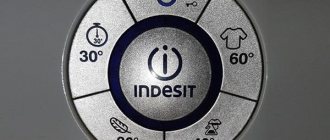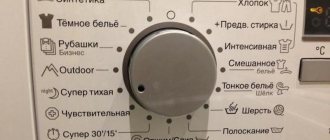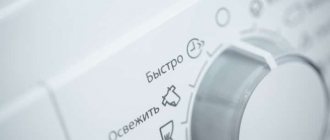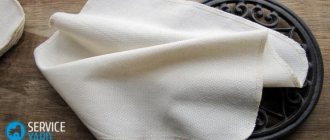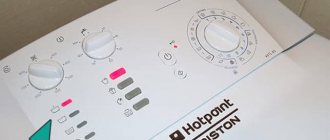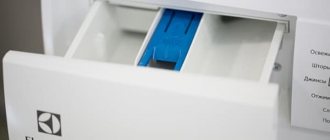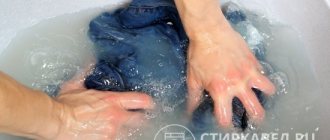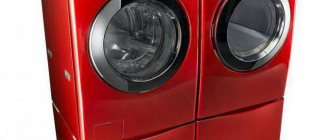Nike and Nike Air Max sneakers are comfortable and practical shoes that are used not only for sports, but also in everyday life. However, even if you use it carefully, it will inevitably get dirty.
Since the original models are highly expensive, you need to approach the issue of washing them especially carefully, following the manufacturer’s recommendations.
We will tell you in this article whether and how to wash Nike sneakers in an automatic washing machine.
Which sneakers can't be washed?
Not every pair can withstand machine washing. Here are the cases in which it is better to abandon this idea:
- sneakers are cheap, made from low quality materials. After washing, they may become very deformed or come apart;
- the shoes are damaged, there are cracks or small holes, threads are sticking out, the seams are weak;
- There are decorative metal or reflective elements. They may fall off during the washing process. This creates a risk for the washing machine, since foreign objects that get inside can damage it.
- shoes are made of leather, suede or nubuck. Such sneakers can only be cleaned by hand, without soaking, as due to prolonged exposure to water they will lose their original appearance, swell and become deformed.
But textile sneakers with good quality soft rubber soles can be machine washed. Manual cleaning will not be as effective for them.
Is it possible?
Nike sneakers can be made from both textiles and natural materials. Nike Air Max shoes are made only from genuine leather.
The manufacturer is categorically against washing in a washing machine. This applies to all original models.
However, there are exceptions to any rule, since sometimes it is not possible to refuse automatic washing.
You can put fabric Nike sneakers in the washing machine. However, under no circumstances should the following pairs be washed in it:
Nike Air Max models. They are made from genuine leather, which cannot be machine washed.- Products that have defects in the form of unraveling seams, oozing foam rubber, etc. Once in the drum of the washing machine, they will deteriorate completely.
- Sneakers with many stripes, reflective tapes and other decorative elements.
Hand wash is a priority on all Nike styles. The manufacturer allows the use of weak cleaning solutions to treat the soles and uppers of sneakers.
Disadvantages of machine washing:
- severe wear of the material,
- drying out of the sole,
- reduction in shock-absorbing properties,
- premature appearance of villi,
- loss of sneaker shape.
How often should you wash your sneakers?
Sneakers should be washed when they become dirty. The main signs that help determine the need for washing are:
- unpleasant odor;
- mechanical contamination, stains.
The latter most often appear among orienteers, multi-athletes, as well as fans of unusual sports, for example, cross-country races with obstacles in the form of swamps and ditches with mud. In this case, you will have to wash your sports shoes constantly, after each marathon.
If sneakers are needed only for running on asphalt paths, then they will have to be washed mainly because of the unpleasant odor of sweat that appears after wear.
Advice! Don't put off washing your sneakers, otherwise stains and odors will be absorbed into the material and will be more difficult to remove.
How to check the original Nike by code?
You can check the authenticity without opening the package. If the product is original, then the label on the box has a nine-digit code. The first 6 digits indicate the model. The last 3 are color.
Interesting materials:
How to remove machine oil from a down jacket? How to remove an oil stain using salt? How to remove oil paint from fabric? How to remove oil from a jacket? How to remove scale from an enamel kettle? How to remove Olia from clothes? How to remove paste from a jacket? How to remove pen paste from paper? How to remove stains on kitchen towels? How to remove sunflower oil stains?
Features of washing in an automatic machine
Preparation
Sneakers and sneakers can be washed in an automatic machine if you set the appropriate temperature and prepare the shoes well.
The preparation procedure is as follows:
- Remove the insoles and laces.
- Clean off any accumulated dust and dirt. Small pebbles, which often get stuck in the soleplate, can ruin the washing machine if they get into the drum.
- Rinse with warm water using a toothbrush.
Mode and temperature
It is safest to wash shoes at a temperature of 30-40 °C. Warm water is enough to wash away stubborn dirt without making the sneakers unstick. If there is no special “Shoes” mode, the most suitable would be “Hand Wash” or “Delicate”. Each sneaker must be placed in a special laundry bag. You can also put laces there so you don't have to wash them by hand. It is not recommended to load more than two pairs into the washing machine, as this can damage the drum and the machine door.
Advice! During washing, the sneakers will knock heavily on the drum. To soften this process and keep machine parts intact, it is recommended to place an additional softening item in the machine, such as a light jacket or towel.
The washing program should stop after rinsing and the final drainage of water. Spinning and drying must be turned off.
Suitable modes for various models of washing machines
Not all washing machines have a “Shoes” mode, but you can wash dirty sneakers using other settings. Each model of equipment has its own programs that are suitable for sports shoes:
- LG. This washing machine has several gentle washing modes: “Delicate”, “Sportswear”, “Duvet”, “Baby Clothes”.
- Ariston. Models of this brand include “Delicate wash”, “Mix 30”, “Mix 15”, as well as “Children’s underwear”.
- Indesit. Most washing machines from this manufacturer have “Sports” category modes for sports shoes and clothes. If the model is more simplified, you can use the “Delicate Wash” or “Express” programs.
- Samsung. In automatic washing machines from Samsung, “Delicate wash” and “Children’s items” are suitable for sneakers.
- Elecrolux. Not all models have this, so you can also wash your shoes using the “Hand Wash”, “Blanket”, “Delicate Fabrics”, “Curtains” programs.
- Siemens. This brand offers modes such as “Fluff”, “Sensitive”, “Delicate”.
- Bosch Maxx. If the “Sportswear” program is not provided in your automatic machine, you can use “Hand” or “Delicate” washing, “Silk”, “Wool” modes.
- Zanussi. This manufacturer produces models that have “Delicate”, “Children’s clothing”, “Shoes”, “Blanket” modes.
Attention! Regardless of the brand of household appliances, before washing, you need to turn off the spinning and drying, if provided.
Detergents
It is not recommended to wash sneakers with powder, as if the shoes are not rinsed well, streaks will remain. A suitable option is a liquid product. If it is packaged in special capsules, they can be placed directly into the drum.
For white sneakers and sneakers, it is allowed to use a gel with a whitening effect; the colors of a bright pair may fade.
Why use a “mesh” for washing?
Regardless of the selected washing mode, you must use a special bag. It is a mesh that is tightly closed with a lace or zipper. Thanks to this device, several tasks are achieved at once:
- shoes do not rub against the surface of the drum, which reduces wear;
- sneakers do not unbalance the washing machine because they do not move freely in it;
- decorative elements will not fly off;
- pills will not appear on the shoe fabric.
Such a bag will cost about 100 rubles, and you can use it as much as you like. You can buy it at a hardware store or supermarket. If you don’t have time to look for this device, you can use an old pillowcase, which should be tightly fastened.
How to wash sneakers by hand?
Hand washing is more gentle than machine washing. In this way, you can wash sports shoes made from a variety of materials: suede, nubuck, leatherette, textile, rubber. Pre-soaking is undesirable, since prolonged exposure to water leads to deformation of the shoes.
Here's how to wash it properly:
- Remove the laces and insoles and soak them separately in soapy water. Wash off any visible dirt or dust under the tap.
- Fill a basin with warm water and dissolve washing powder, gel or soap in it. Immerse your shoes in it.
- Wash sneakers inside and out using a stiff brush or sponge. Rinse thoroughly and set to dry.
- Hand wash soaked insoles and laces and dry them at room temperature.
Often, the sole of a sneaker is difficult to clean with powder. You can restore its whiteness using improvised means.
There are several ways:
- Cover the soles and other dirty areas with baking soda. Wait 10 minutes, pour in 9% table vinegar. Use the resulting foam to clean off stains using a toothbrush or shoe brush;
- You can remove traces of paint or a ballpoint hand using citric acid: 20 g of powder is poured into 50 ml of water. This solution is used in combination with laundry soap;
- 3% hydrogen peroxide will help whiten rubber sneakers. It must be added to the water during the last rinse at the rate of 50 ml of peroxide per 1 liter of liquid.
Conditions and care products
Sneakers or sneakers are mostly made using glue. That is, the sole is not sewn on, but glued, so when washed, there is a possibility that the glue will not withstand the load. To avoid negative consequences, make sure it is reliable in advance.
Care Tips:
- It is advisable to clean one pair at a time in the machine. If the models are very bulky, they may damage the glass of the machine;
- There will be no streaks on the surface if you use liquid laundry detergent. The liquid product copes more effectively with pollution and dissolves well in water. Also, to achieve the desired effect, you can add conditioner to preserve the color scheme or bleach, depending on the models;
- the glue at the joints does not withstand temperatures above 45 degrees. When washing, you should not increase the water level to this level; it is best to keep it warm;
- do not use any auxiliary modes. You just need to wash them without wringing them out and put them to dry;
- Removable elements, including laces and insoles, should only be inserted into thoroughly dried shoes.
Based on the rules presented, it is worth concluding that it is best to carry out external care and manual cleaning regularly, and resort to machine washing in rare cases.
Features of washing depending on the material
Suede and nubuck
It is best to wash such sneakers by hand, in water no higher than 30 ° C, then after drying the pile will not be too hard. Procedure:
- To prevent dirt from smearing, the sneakers should be cleaned with a brush first.
- Pour water into a suitable container, dip the shoes in it, and, using a brush, rub them with anti-lint soap foam. Instead of soap, you can use washing gel. The use of bleaches is not recommended.
- Rinse in clean water.
A high-quality alternative to washing a suede pair is steam treatment. Contaminated areas should be treated with a cotton swab soaked in ammonia.
Advice! When drying, suede products should not be hung on clothespins; unsightly creases may remain.
After complete drying, go over the pile again with a dry brush.
If the suede becomes shiny when worn, it is possible to restore its attractive appearance without washing. To do this, shiny areas need to be treated with white bread crumb, an eraser, or a solution of table vinegar diluted with water in equal parts.
White suede or nubuck can be stained with the following mixture:
- milk - 50 ml;
- soda - 1/3 tsp;
- ammonia - 5 drops.
Mix everything, moisten a cotton pad and rub the stains.
Leather and leatherette
Theoretically, sneakers made of genuine leather or its substitute can be washed in a washing machine, but in practice, not every pair of shoes can withstand such a procedure. Often, after machine washing, the leather becomes rough, dries out and cracks, losing its beautiful appearance.
For manual processing of leather sneakers, soap foam is used. The sole is washed under the tap to remove dirt. Soak the sponge in the foam of toilet or laundry soap and gently wipe the surface. Insoles and laces will have to be removed and washed by hand.
But it is best to remove dirt from such sneakers by dry cleaning. To do this you need:
- Remove dust with a flannel cloth;
- If the stains are persistent, remove them with a slightly damp sponge or soft brush;
- Wipe off stubborn dirt with a cloth soaked in a solution of 4-5 drops of ammonia in 1 liter of water (no need to wet the sneakers too much);
- Wash fabric areas with soapy water, being careful not to get it on the skin;
- Treat the insides with a dry carpet cleaner;
- Wipe the sneakers with a slightly damp flannel rag;
- Dry;
- Apply water repellent and skin cream.
Advice! As a preventative measure, you can wipe your sneakers every 7 days with a cloth soaked in a solution of 1 tbsp. l. ammonia per 1 liter of water, and then polish them with dry flannel.
Net
Sneakers with mesh inserts can be washed either in a washing machine or by hand. However, if the mesh is damaged, it is not recommended to process the product using technology.
Hand washing mesh sneakers is carried out in several stages:
- Clean the mesh with a vacuum cleaner or brush. This procedure will help remove dust, sand, soil particles and other contaminants.
- Soak in oxygen stain remover for white or colored items (depending on the color) for 10-15 minutes.
- Cleaning sneakers 1 tbsp. l. toothpaste with the addition of 2-3 tbsp. l. lemon juice.
- Rinse with clean water.
- Thorough drying of the product.
Textile
Fabric sneakers, sneakers, espadrilles, and slip-ons can be safely machine washed. To do this, you need to select a delicate or any other washing mode that carefully removes dirt, temperature – 30°. Spin and dry should be turned off.
Sneakers with membrane
Sneakers with a membrane are often used by professional runners and extreme sports enthusiasts, as they retain heat well and protect from moisture.
There is a misconception that cleaning this material is very difficult because the pores are clogged with debris and sand. However, a high-quality membrane consists of tiny pores, which are much smaller than particles of powder or earth. Therefore, caring for it is practically no different from cleaning other materials.
Still, it is not recommended to wash membrane sneakers using a washing machine. Each manufacturer determines its own cleaning methods; information about this can be found in the instructions or on the label.
It's better to wash them by hand. You can do this as follows:
- Shake debris out of sneakers, remove insoles and laces;
- Add a special membrane cleaner, which is sold in sporting goods stores, to lukewarm water (about 40°);
- Dip a soft sponge into the resulting liquid and clean the sneakers;
- Wash insoles and laces;
- Dry the products away from open flames and heating devices;
- If desired, use impregnation, which will extend the life of the sneakers.
Method #1: hand wash
If the problem of contamination is not too severe, sneakers and sneakers can be cleaned manually. For this you will need:
- a bowl of warm water;
- detergent - both powder and liquid are suitable;
- sponge or brush with soft bristles (you can use an old toothbrush).
You can do without machine washing - thanks to a proven basin and brush.
The process itself is quite simple - dissolve the washing composition, achieve the appearance of thick foam and immerse the shoes in the basin for about 30 minutes. Then arm yourself with a brush and begin to diligently scrub away the stains. When finished, rinse your sneakers with cool water and pat dry lightly with a towel. It is better to dry your shoes on the balcony or outside.
Note: you can lighten white sneakers and sneakers with a solution of lemon juice (1:4) or hydrogen peroxide. After rinsing, the shoes will look like new, and not a trace will remain of their former yellowness!
If your efforts have yielded a victorious result, and there are still dark marks on the light rubber sole, rub them with an ordinary office eraser. Using bleach is also possible: dissolve the powder in clean water and lay the sports pair so that only the sole is in contact with the detergent. After 1.5-2 hours, “walk” with a brush and proceed to rinsing.
Laces should be washed separately from shoes, exclusively by hand. The following improvised means will help remove yellowness and darkening:
- Ammonia and hydrogen peroxide: mix 15 ml of each component, dissolve in 1 liter of hot water and soak the laces for 30 minutes.
- Laundry soap: you just need to rub the dirty laces and leave for half an hour to an hour. Rinse thoroughly later.
- Toothpaste with a whitening effect: the principle of application is the same as in the case of soap. Leave to dry, wash and dry.
Features of washing depending on color
White
White sneakers look stylish, but require regular care. It is necessary to wipe them with a damp sponge after each wear and wash them when they become dirty, since it is difficult to get rid of stubborn dirt.
You can wash white sneakers as follows:
- Wash off all dirt from them with water.
- Treat the most contaminated areas. You need to take regular toothpaste and an old toothbrush and rub the stains. Second option: prepare a mixture of hydrogen peroxide, lemon juice and washing powder. This product should be used to treat seams and other places where dirt accumulates the most.
- Load it into the drum, put it in a special bag, select a program. In addition to the main detergent, you can add oxygen bleach.
Laces and insoles should be washed separately by hand. To bleach, they are first soaked in bleach or liquid laundry soap.
To make white sneakers last longer, you should wear them only in dry weather. After use, you can treat the surface with a melamine sponge. It perfectly removes black streaks, dirt and dust without harming the material.
Colored
Such sneakers must be washed very carefully, otherwise they may not only lose color, but also spoil other products. There are several rules for washing shoes:
- Before washing colored sneakers, do a test: wet a light, plain cloth made of natural material and rub it on an inconspicuous area of the shoe. If there is a bright mark left on the fabric, then the sneakers will fade. In this case, it is better to wash them by hand or dry clean them.
- For machine and hand washing, you need to choose a low water temperature.
- It is better to wash a pair of colored sneakers separately from other items, otherwise there is a risk that they will become dyed.
- When removing stubborn stains, do not use stain removers for white things, as well as products that can leave faded marks: ammonia, lemon juice.
- To remove dirt, special household chemicals for washing colored items are well suited. It will maintain brightness and add saturation.
How to wash branded shoes?
Features of caring for branded sneakers are usually indicated in the instructions on the label, but often the printed text is erased with intensive wear. Here are some tips to help you wash branded sports shoes correctly:
- Adidas. Sneakers from this manufacturer can be machine washed at 30°. However, if the products are made of nubuck, they can only be hand dry cleaned.
- Reebok cannot be machine washed or used with harsh stain removers or bleaches.
- New balance, like Reebok, do not support automatic washing, as they contain inserts made of suede, nubuck and leather. Abrasive products are also prohibited. It is best to use dry cleaning with a soft brush.
- Nike. Sneakers from this company can be washed on a delicate cycle in an automatic washing machine.
- Converse. Converse can easily withstand automatic washing, but before that it is better to clean them with a mixture of 3 tbsp. l. vinegar and 2 tbsp. l. baking soda.
- Demix. These sneakers can withstand machine washing at 40° on a delicate cycle. They can also be washed by hand using soapy water and a medium-hard brush.
- Vans need to be washed by hand, as automatic washing causes pilling to form on Vans' products. The water temperature should be less than 40°, the soaking time should be 1-2 hours.
- Ecco. Ecco sneakers are made of eco-leather, so dirt can only be removed using a dry method. In especially advanced cases, it is better to take the pair to the dry cleaner.
- Puma. Shoes from this manufacturer, like Nike, can be washed in a washing machine. But if we are talking about suede, use dry cleaning.
How to properly dry sneakers after washing?
Improper drying can lead to deformation and cracks. For this reason, automatic drying in a washing machine is prohibited. To avoid damaging your shoes, you must follow these rules:
- Prepare some scrap cotton cloth or toilet paper and stuff the steam tightly inside. This technique will help dry your sneakers quickly, since these materials absorb moisture well. You can also use old newspapers, but there is a small risk that the printing ink will leave marks.
- Shoes are dried at room temperature. Do not place it on a hot radiator or close to a heater. The sole may deteriorate and break, and the sneakers themselves will become hard. If they do not dry inside for a long time, you should use a special shoe dryer.
- You can speed up the drying process by using a hairdryer. You need to set it up so that it blows cool air rather than hot air.
- The room in which sneakers are dried should be well ventilated.
- You can’t put undried steam in a closed cabinet; it will smell.
- In spring and summer, they can be dried on the balcony, protected from direct sunlight.
- It is more convenient to have not one, but two pairs of sneakers or sneakers, in order to allow the washed pair to dry properly.
- Insoles should only be inserted into sneakers when they are completely dry, otherwise an unpleasant odor may appear.
How to get rid of odor in sneakers without water or soap
There are situations when it is necessary to remove the unpleasant smell of sneakers using quick “dry” methods, without resorting to washing. There is such an opportunity: you can use shoe deodorant, which is convenient to take with you on any trip, or wipe the inside of your shoes with hydrogen peroxide so that the fabric becomes slightly damp. The peroxide will soon evaporate, and with it the unpleasant odor will go away.
You can try putting green tea bags in your sneakers at night, however, this method takes longer and may be less effective as it masks the odor rather than destroying the bacteria that are responsible for the odor.
On the subject: How to get rid of unpleasant odor in sneakers
photo: wikihow.com
Possible problems after washing
Often, after washing, especially in a washing machine, problems may arise that affect not only the appearance of the shoes, but also their practical properties. Therefore, you need to strictly follow the manufacturers’ recommendations, and also be prepared for deterioration in the quality of the sneakers.
Most often, washing can lead to the following consequences:
- rapid wear of the shoe surface;
- loss of shock-absorbing properties of the sole when water gets into it;
- peeling off the sole if it does not adhere well to the glue.
- the appearance of pills on fabric and suede sneakers - they can be removed using a razor, the main thing is not to wipe the material; deformation - to give the original shape, you need to tightly stuff the sneakers with newspaper and dry them;
- yellow stains - repeated washing with bleach will help get rid of them;
- the appearance of stains - you need to rinse your shoes thoroughly in clean water;
- creaking – it is necessary to lubricate the rubber and leather elements of the sneakers with soap.
To ensure that sneakers have to be washed less often, additional care products should be used. To prevent odor, use shoe deodorant. To protect the surface from moisture, treat with water-repellent sprays after each wash.
Important Tips
In order to wash Nike sneakers with minimal losses, you need to follow the following recommendations:
- It is not recommended to use fabric softener to wash shoes. She may react to him in unexpected ways.
- To make shoes less dirty, after washing they need to be treated with a water-repellent and dirt-repellent agent.
- To deodorize the insoles and give them a pleasant smell, you can add a few drops of sage or fir essential oil to the laundry detergent.
- During drying, it is not recommended to keep shoes suspended, fixing them with clothespins.
- After washing, you need to rinse your sneakers thoroughly so that no dirt or detergent particles remain on them. If this is not done, they may deteriorate or become covered with yellow stains.
- To wash colored shoes, do not use products containing a bleaching component.
- It is forbidden to twist shoes to remove excess moisture from them.
When washing sneakers in the washing machine, you may hear an unusual noise. It is not recommended to stop the wash cycle because of it. The noise occurs as a result of the beating of the hard sole against the drum.

